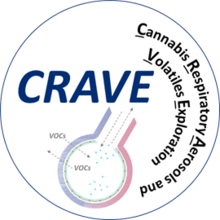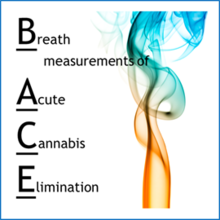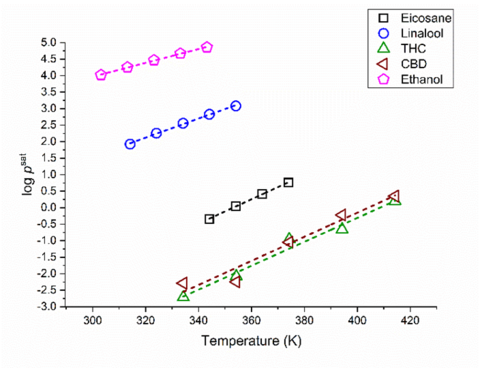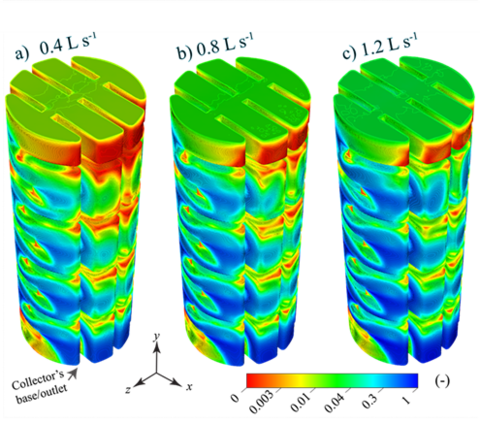Summary
Founded in 2019, this program was motivated by the rapid decriminalization of recreational and medical cannabis by state governments. This has led to extensive R&D by universities and industry to invent a field-deployable cannabis breathalyzer for law enforcement. Several versions of breath collection devices are being marketed for the detection of THC (delta-9-tetrahydrocannabinol) in the breath of cannabis users. THC is not directly correlated to intoxication, but may indicate recent smoking or vaping. THC and other cannabinoids are non-volatile and chemically unstable, creating an as-yet-unsolved reliability challenge that did not exist for the alcohol breathalyzer. ACMD’s scientists and engineers are using their backgrounds in vapor capture and analyses to identify and quantify compounds linked to recent cannabis use in the exhaled breath of cannabis users. The ultimate positive impact on the criminal justice system will be a breathalyzer device that leverages the optimal materials and collects the right target compounds to reliably determine recent cannabis use.
Description
NIST's initial work in cannabis science was a series of measurements of the vapor pressure of two important cannabinoids: delta-9-tetrahydrocannabinol (THC) and cannabidiol (CBD). Our current effort is funded in part by interagency agreements with the ational Institute of Justice and by the NIST Forensic Science Research Program. The program has three distinct, but related, aims:
- To identify compounds in the breath of cannabis users, including cannabinoids and other chemicals that have typically been ignored.
- To measure the chemical and physical properties of these compounds, in particular, their vapor pressures.
- To quantify the performance of aerosol collection devices with numerical simulations and in the laboratory with breath surrogates.
1. Authentic Breath Analysis. In our pilot study, we partnered with colleagues at the University of Colorado (Institute of Cognitive Science; Center for Health and Neuroscience, Genes, and Environment) to collect and analyze breath aerosols from experienced cannabis users before and after use of a single legal-market cannabis flower product. Two larger human studies are ongoing:

Cannabis Respiratory Aerosols and Volatiles Exploration (CRAVE): In this study, projected to begin October 2022, we will partner with colleagues at the University of Colorado (School of Public Health – Injury and Violence Prevention Center) to collect and analyze exhaled breath condensate before and after use of legal-market cannabis flower or concentrate products.

Breath Measurements of Acute Cannabis Elimination (BACE): In this study, projected to begin April 2023, we will collect and analyze breath aerosols from daily cannabis users during periods of abstinence and immediately after use of a single legal-market cannabis product.
2. Fundamental Measurements of Cannabis Compounds. We have developed dynamic vapor microextraction (DVME) as a method for rapid vapor pressure measurements on large molecules with state-of-the-art measurement uncertainty for vapor pressures near 1 Pa. Four key features allow the rapid collection of vapor under thermodynamic conditions: (1) the miniature vapor-liquid equilibration vessel (the “saturator”) minimizes temperature gradients and internal volume, (2) the capillary vapor trap minimizes the internal volume, (3) the helium carrier gas minimizes nonideal mixture behavior, and (4) the direct measurement of pressure inside the saturator allows us to accurately account for overpressure caused by viscous flow. The method was initially validated with n-eicosane and recently utilized for the more volatile and unstable molecule, linalool.

3. Numerical and Laboratory Investigations of Aerosol Capture. Our current focus is developing high-fidelity three-dimensional computational fluid particle dynamics model to simulate aerosol deposition and distribution within the breath collection device used in our pilot study. Aerosols were simulated as water droplets, ignoring other constituents (e.g., phospholipids, proteins) and the models include four particle diameters that are “injected” simultaneously into the collector at a range of volumetric flow rates.

Selected Publications:
C. N. Beuning, T. M. Lovestead, M. L. Huber, and J. A. Widegren. Vapor pressure measurements on linalool using a rapid and inexpensive method suitable for semivolatile organic compounds, submitted.
K. M. Jeerage, J. L. Berry, J. A. Murray, C. A. Goodman, P. K. Piotrowski, C. M. Jones, C. E. Cecelski, J. Carney, K. A. Lippa, and T. M. Lovestead,, 2022. The need for multicomponent gas standards for breath biomarker analysis, Journal of Breath Research 16, 044001, https://doi.org/10.1088/1752-7163/ac70ef
K. M. Jeerage and E. N. Holland, 2020. Predicting sorbent-air partition coefficients for terpenoids at multiple temperatures, Industrial and Engineering Chemistry Research 59, 16473-16482, https://doi.org/10.1021/acs.iecr.0c02190
M. E. Harries*, C. N. Beuning*, B. L. Johnston, T. M. Lovestead, and J. A. Widegren, 2020 (*equal contribution). Rapid vapor collection method for vapor pressure measurements of low-volatility compounds, Analytical Chemistry 92, 16253-16259, https://doi.org/10.1021/acs.analchem.0c04131
T. M. Lovestead and T. J. Bruno, 2017. Determination of cannabinoid vapor pressures to aid in vapor phase detection of intoxication, Forensic Chemistry 5, 79-85, https://doi.org/10.1016/j.forc.2017.06.003.

